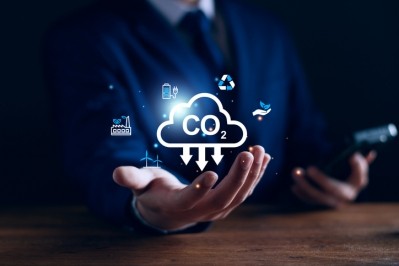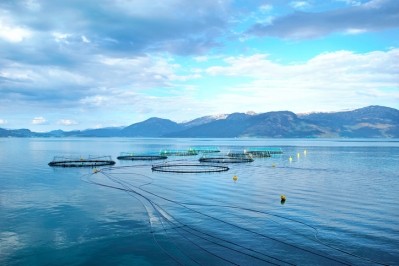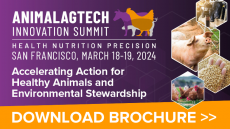Scaling novel ingredients: ‘Offtake agreements as currency with feed producers are absolutely critical’

Investors in this space need to be aware that “biology can’t be fooled with money or technology,” said Øyvind Fylling-Jensen, former CEO of NOFIMA.
In other words, stakeholders need to consider, as a priority, the value any new ingredient brings in respect of meeting the nutritional and welfare requirements of farmed fish species.
Scalability and affordability are other essential considerations as well as ensuring that the raw material can be sourced or produced sustainably, he continued.
He does not foresee algal oils, single cell proteins, insect feed or other novel components replacing conventional feed ingredients, but more that they will be used to diversify the basket of existing raw materials.
Investors need to remember that beyond salmon, there are vast, underexploited opportunities when it comes to other aquaculture species as regards the incorporation of novel feed raw materials, added Fylling-Jensen.
Norway has set a goal of producing 5 million tons of salmon in 2050, which translates to 6.2 million tons of feed when measured in dry weight. To meet this ambitious goal, sustainable feed production is critical to ensure reduced emissions and costs, according to the seventh edition of EY’s annual Norwegian Aquaculture Analysis.
“Access to enough sustainable raw materials for feed is expected to become one of the greatest barriers to salmon aquaculture growth. Currently, feed is by far the largest contributor to both emissions and costs in the salmon industry, accounting for around 80% of the emissions per unit of salmon and about 46% of the production costs.”
Norwegian policymakers are urging that all salmon feed should come from sustainable resources by 2030, and that there should be greater use of local ingredients. However, Norwegian salmon production is highly dependent on imported ingredients, found EY’s report, which was released in March this year.
New ingredients such as insect meal, single cell proteins, and microalgae accounted for only 0.4% of total ingredients in 2020, and none were produced in Norway, it documented.
There are numerous early phase projects aiming to develop future feed ingredients from Norway, but few initiatives have reached industrialized production, found the outlook. “To meet the national ambitions of sustainable feed ingredients, overcoming barriers from high cost, regulatory framework, customer acceptance and nutritional quality will be especially important.”
Let’s call them ‘sustainable, circular, or regenerative’ but not ‘novel’ ingredients
Erik Tveteraas, director of venturing, at Nutreco, which is the parent company of fish feed producer, Skretting, said the division continuously tracks developments in new feed raw materials.
But it has decided to move away from using the term ‘novel’ ingredients. “Within novelty, there is this idea that a raw material must be generated by a new type of technology, one that has not be utilized before. We think it is more meaningful to discuss whether a raw material has been produced in a sustainable, circular, or regenerative way. If it ticks the right boxes for us on cost, on carbon footprint or on availability of supply then that is something we will go for, whether that is a novel type of approach, or it is just using side streams from established industries.”
The Nutreco fund’s approach to supporting new feed ingredients differs from the way it manages funding in areas that fall under its other 'investment themes' such as fish health, digital solutions, alternative farming methods like RAS, or cell-cultured seafood and meat startups, where it will be investment first, then a partnership with the startup in question.
In the raw material context, it is partnership first. “[In that space], we see ourselves as a willing buyer; we are willing to make meaningful offtake commitments that will hopefully give credibility to a business case for other bigger, financial investors to [come onboard],” explained Tveteraas.
The Nutreco fund may sometimes also consider taking a smaller, minority equity position in the feed ingredient developer.
Tapping into research, commercial capabilities
Nizar El Alami, CBO at French insect ingredient producer, Innovafeed, said feed companies and strategic partners have a key role to play in helping feed ingredient startups to make impact, to reach scale, either through investment or alliances.
Innovafeed has long-term partnerships with customers, and it also being supported by two strategic investors: ADM and Cargill. “This allows us to tap into both research and commercial capabilities.”
Allan LeBlanc, vice president, aquaculture lead, Calysta, echoed that, saying partners have been critical to the single cell protein (SCP) producer’s growth plan throughout its history. It recently opened its first commercial production facility, based in Chongqing, China. The plant has 20,000 tons per year capacity. It did that with its joint venture partner, Adisseo.
“I think that [regardless of] whether it is a customer partner, a sales or distribution partner or a production partner, [those kinds of agreements] are absolutely necessary to be able to deliver the scale, to be able to deliver the volumes, to be able to deliver the financing requirements that are needed for feed ingredients, because if you are not making thousands of tons, it is hard to get anyone’s interest. And all these systems, whether it is insects, bacterial proteins, or krill, they are hugely capital intensive; you need partners to be able [to get to that scale].”
We talked to DSM's Louise Buttle in May about how to scale new raw materials in a sustainble way.
Lowering costs, carbon footprint
Also commenting on the topic of the role established feed organizations can play in this space was Mark Luecke, managing director and CEO of US-based Prairie Aquatech, a company that ferments plant-based protein from agricultural by-products:
“We currently produce about 30,000 tons of a fermented soy product, and we are looking to expand that. Again, it is our partnerships that will, to a large extent, allow us to do so, to build our business and to continue to expand our production capacity."
He also said that a startup's costs of production, evidently, will come down, and its carbon footprint can often be lowered, the greater the scale it can reach. "So, these offtake agreements as currency with feed producers are absolutely critical for the success of [startups].”
















